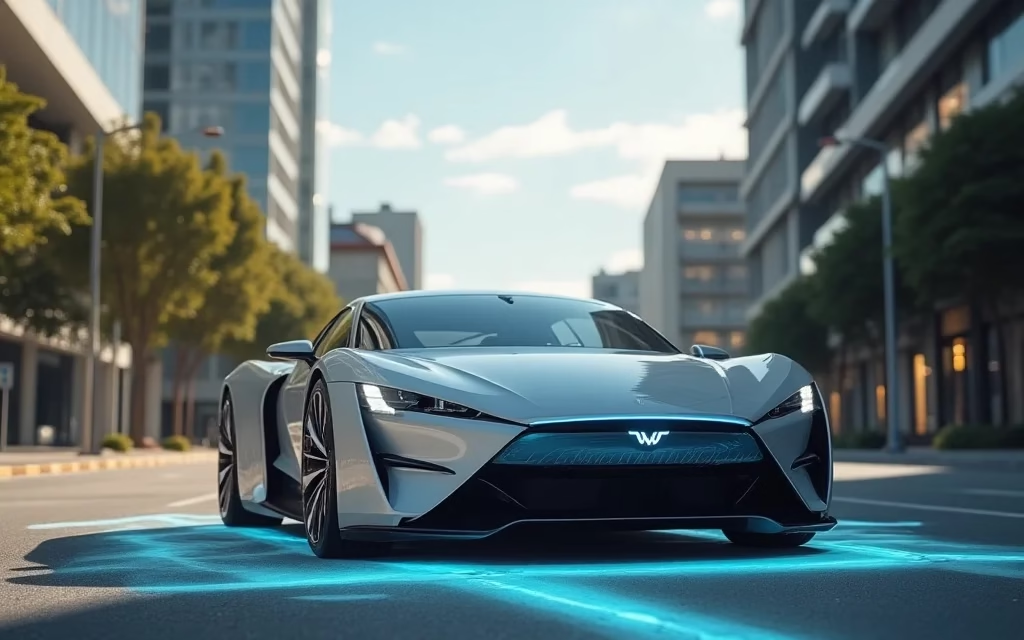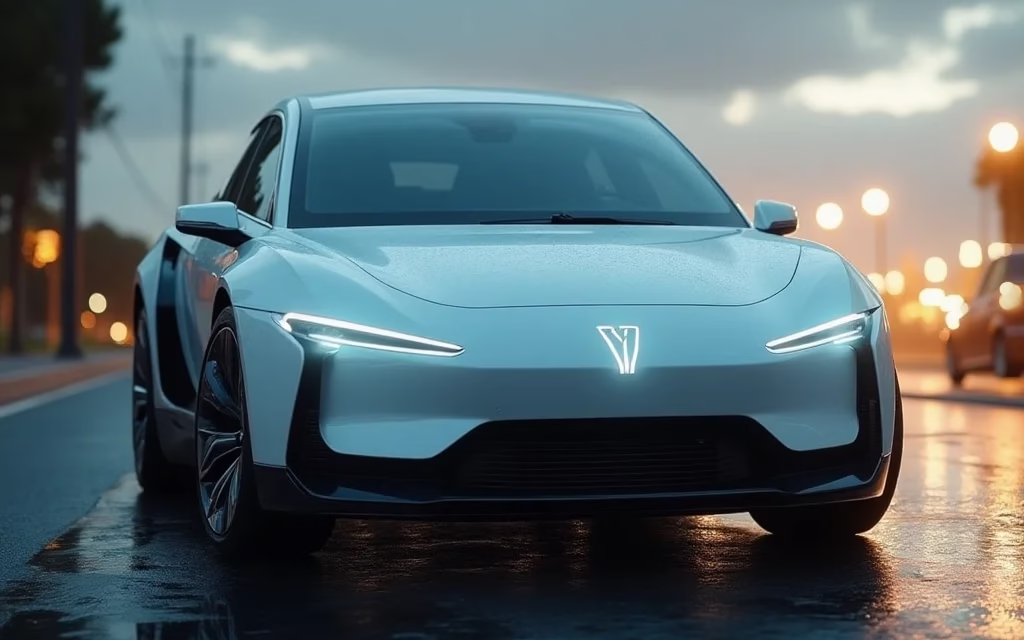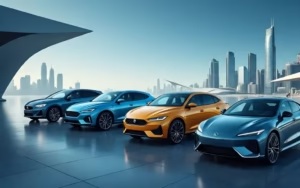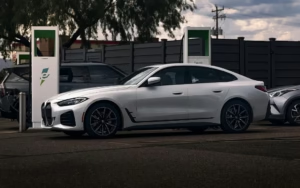Australia is on the brink of an electric vehicle (EV) revolution, and understanding the future trends in electric vehicle innovations is key to preparing for what’s coming. With increasing government support, technological breakthroughs, and public enthusiasm for sustainable transport, 2025 is shaping up to be a transformative year for EVs in Australia. These innovations not only promise a cleaner future but also bring new opportunities for infrastructure, energy systems, and everyday mobility.
Rapid Growth in Solid-State Battery Technology
One of the most exciting future trends in electric vehicle innovations is the advancement of solid-state batteries. Unlike traditional lithium-ion batteries, solid-state versions offer higher energy density, faster charging times, and greater safety. By 2025, Australian EV manufacturers and importers are expected to begin integrating this technology, which could lead to longer vehicle ranges and improved battery longevity.
Companies like Toyota and QuantumScape are already making strides globally, and Australia is poised to benefit from their progress. With solid-state batteries, EVs will become more efficient and practical for everyday Australians, especially in rural and regional areas.
Ultra-Fast and Wireless Charging Solutions
Charging technology is evolving alongside battery improvements. The future trends in electric vehicle innovations include ultra-fast charging networks that can top up an EV in less than 10 minutes. Australia is investing in such infrastructure along major highways and in urban centers.
In addition, wireless charging is beginning to emerge. These systems allow vehicles to recharge simply by parking over a charging pad, much like wireless phone charging. In cities like Sydney and Melbourne, pilot programs are already exploring this hands-free solution to enhance convenience and reduce cable clutter.
Expansion of Vehicle-to-Grid (V2G) Technology
Another major component of the future trends in electric vehicle innovations is the rise of V2G capabilities. This technology enables EVs to send electricity back into the grid during peak demand times. In Australia, where renewable energy sources like solar are abundant, V2G helps stabilize the grid and create a more resilient energy system.
For EV owners, this means they can potentially earn money by selling unused electricity. As more Australians adopt EVs, the integration of V2G could significantly shift how energy is consumed and stored nationwide.

Autonomous and AI-Enhanced Driving Features
Artificial intelligence (AI) and autonomous driving are also central to the future trends in electric vehicle innovations. By 2025, more EVs in Australia will include advanced driver-assistance systems (ADAS) like adaptive cruise control, lane-keeping assistance, and automatic emergency braking.
While fully autonomous vehicles may still be years away from widespread use, semi-autonomous features will enhance safety and driving comfort. These systems will especially benefit older drivers, reduce accidents, and improve traffic flow in urban areas.
Integration with Smart City Infrastructure
Australia’s push toward smart cities aligns closely with the future trends in electric vehicle innovations. EVs will increasingly connect with urban infrastructure, such as traffic signals, parking systems, and energy grids. This level of integration enables real-time updates for route optimization, charging availability, and environmental impact.
Smart charging stations will automatically balance power loads and may even prioritize EVs with emergency needs. This seamless communication between EVs and city systems is a step forward in sustainable urban planning.
Growth of Local EV Manufacturing and Innovation Hubs
Australia is developing its own innovation ecosystem for EVs. In 2025, expect to see a rise in local startups and manufacturers focused on electric drivetrains, battery components, and charging technologies. Government incentives and clean energy grants are fueling this growth.
One of the future trends in electric vehicle innovations includes regional innovation hubs in places like Adelaide and Brisbane, where clean-tech companies are collaborating with universities and research centers to advance EV technology tailored for Australian conditions.
Use of Recycled and Sustainable Materials
Sustainability is not limited to emissions. The future trends in electric vehicle innovations emphasize the use of eco-friendly materials in vehicle production. Automakers are now using recycled plastics, bio-based materials, and responsibly sourced metals in EV construction.
By reducing the environmental impact of manufacturing, these trends contribute to a more circular economy. Australia, with its strong focus on conservation and climate policy, is likely to become a leader in sustainable EV practices.
Enhanced Consumer Experiences through Digital Platforms
The future of EVs also involves a shift in how consumers interact with their vehicles. Mobile apps and cloud platforms will allow EV owners to manage charging, monitor vehicle health, and receive software updates remotely.
The future trends in electric vehicle innovations are pushing automakers to focus more on user experience. In-car entertainment, smart navigation, and personalized settings will be standard features, making driving more enjoyable and efficient.
Adoption of Fleet Electrification in Public and Private Sectors
As part of Australia’s transition to net-zero emissions, both government and commercial fleets are turning to EVs. The future trends in electric vehicle innovations include widespread fleet electrification, which helps reduce emissions on a large scale.
From postal delivery vans to ride-share vehicles, electric fleets will become more common in 2025. Supporting policies, such as tax benefits and reduced registration fees, are encouraging this shift.
Development of Modular and Customisable EV Platforms
Manufacturers are introducing modular platforms that allow for a variety of EV configurations using a single chassis. This innovation allows quicker development and production of vehicles ranging from compact cars to utility vans.
The future trends in electric vehicle innovations include vehicles that can be customized to individual needs while reducing production costs. This is especially useful for Australian buyers who require unique vehicle setups for work or recreation.
Focus on Rural Charging Infrastructure
To ensure inclusivity, Australia is prioritising rural and regional EV infrastructure. One of the critical future trends in electric vehicle innovations is the rollout of solar-powered, off-grid charging stations in remote areas.
This ensures that EV ownership is not limited to city dwellers and helps bridge the urban-rural mobility divide. It also strengthens regional sustainability and supports tourism.
Integration of Blockchain for Charging and Payments
Another cutting-edge development in the future trends in electric vehicle innovations is the use of blockchain technology for secure charging payments and energy tracking. Blockchain can ensure transparency in energy sourcing, allowing consumers to verify they’re using 100% renewable electricity.
This technology also supports peer-to-peer energy sharing, where EV owners can sell excess solar energy or charging time, creating new economic models around EV ownership.
Conclusion
The future trends in electric vehicle innovations are shaping a dynamic, sustainable, and highly advanced transportation future for Australia. From breakthroughs in battery technology and wireless charging to smart city integration and blockchain solutions, 2025 promises to be a milestone year for EV development.
By staying ahead of these trends and continuing to invest in infrastructure, education, and innovation, Australia can lead the global shift to a clean and efficient mobility landscape. The transformation has already begun, and the road ahead looks electric.






